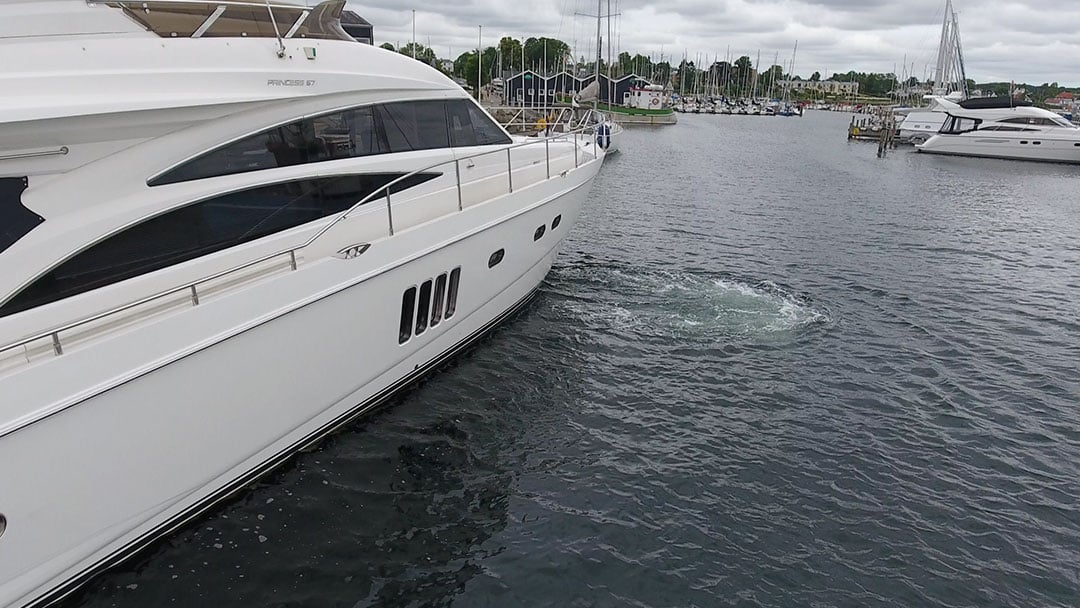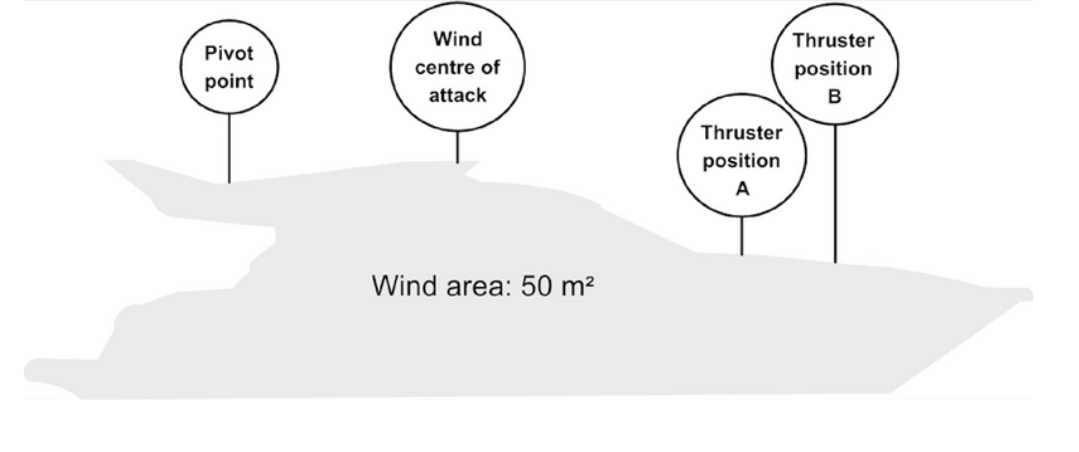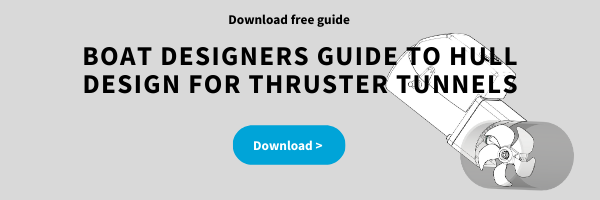
Thruster expert Runar Scott Jensen explains how to calculate the amount of power you will need from your bow and/or stern thruster.
Whether you have decided to buy a bow or stern thruster, or planning to upgrade an existing installation, you will need to determine the amount of thrust output required to suit your specific need.
By definition, any thruster will, to some extent, get the job done. The key is to ensure that your chosen thruster will perform as expected in your boat specifically. Several boat design characteristics will give you reliable insight into what size you should go for and what kind of performance you can realistically expect to achieve.
Accurate calculation for best thruster performance
The thruster size used by boat builders varies depending on the boat's intended usage and price level. Most pleasure crafts over 25 feet come with a bow thruster as standard equipment, which generally meets the expectations of most customers when using the boat under normal weather conditions. For context, a typical thruster in a production boat will push the boat's bow against a direct side wind of 21-23 knots. Moreover, some custom-built or very high-end ships can install a very robust bow thruster that pushes the bow against a direct side wind of 24-26 knots.
Read more: Why do you need a bow thruster on a small boat? →
For boat owners who use their boats demanding conditions or have, for example, a strong current in their local marina, or for other reasons require very high performance, many boatbuilders now offer upgrades to a more powerful thruster system.
To choose the optimal solution for your boat, these are the parameters you need to evaluate:
Windage area
The windage area above the waterline of the boat is a key factor used by thruster manufacturers to calculate the theoretical performance of various thruster models. These calculations aim to predict what wind force a given thruster is able to push the boat's bow or stern against directly.
An installer needs an accurate assessment of your boat's total windage area in square meters of the hull's topside profile above sea level. If there are strong currents in the harbors you frequently use, you should also take this into account.
Placement
Another factor affecting the performance and efficiency relates to the physical positioning of the thruster. The placement of the thruster on the hull directly impacts the actual thrust available.
A position further against the bow will significantly increase the sufficient thrust due to the weight arm principle since the thruster is further away from the boat's rotation point:

| Thruster model | SE130/250T | SE170/250T |
| Position A | 21.2 knots | 23.9 knots |
| Position B | 22.4 knots | 25.2 knots |
The example above shows the different wind speeds that two different thruster installations can counter and the increased leverage gained when the thruster position is further forward.
If you cannot fit a tunnel in a satisfactory position, you might want to consider a retractable or externally mounted thruster instead. You can read more about the various types of thrusters available here.
Tunnel diameter
It is wise to play safe by installing the largest tunnel diameter you can fit within the correct tunnel placement guidelines in terms of minimum depth below the waterline and tunnel lengths. The reason for this is that the smallest tunnel diameters with a mighty electric motor produce swift water flow through the tunnel to achieve its rated output. Typically, bigger tunnels have lower water speed, which reduces the risk of water cavitation that impacts efficiency and not least, noise.
Actual voltage reaching the electric motor
A word of caution is that voltage drop (caused by inevitable resistance from cabling, main switch, fuse, and the like) might have a more significant effect on actual available thrust power than some manufacturers have led you to believe. To obtain the rated performance of a thruster, it is necessary to calculate with loss of voltage through the battery cables, main switch, and fuse.
Typically, in a 12V system, you will find that you only get 10-11 volts reaching the electric motor. This is a significant energy reduction that directly effects the thruster's output. If you have decided you need 130 kilos of force for your vessel, but only get 110, you will probably be disappointed.
Read more: How to choose the right thruster for your boat →
Make sure that you look at the rated thrust at say 10,5 volts, which is a typical value in a decent installation. You can also consider installing a dedicated battery close to the thruster to reduce high voltage drops from very long battery cables. Remember that the battery needs an enclosed and ventilated battery enclosure if installed in a cabin.
As previously mentioned, some manufacturers state the rated thrust at unrealistic voltage levels and thereby make it more challenging to compare different brands, so make sure to acquire realistic thrust performance before deciding on a specific model.
Stern thruster performance
Against most beliefs, a stern thruster does not require more thrust to give the same effect as the bow thruster. The reason for this is that the stern thruster is mounted outside the hull, thereby further from the boat's pivot point when using the thruster and thus gets more leverage. Depending on boat type and wind area of the boat, the same size or the model below will, for most, be an excellent match to the bow thruster, given that the bow thruster is dimensioned correctly in the first place. However, if there are obstacles in the water flow, or to and/or from the stern thruster, more thrust might be necessary to match the bow thruster. Installing cowls can also be a good solution, guiding the water flow away from obstacles.
Don't waste your investment
Speaking from experience, installing a thruster that is too small is a wasted investment. It is under the harshest conditions you genuinely need the extra maneuverability to dock your boat safely. If the thruster system is underrated and cannot give you the help you need when you're surprised by nasty weather, you could say that the investment hasn't paid off. I have never heard anyone complain about their thrusters being too powerful. Though, I have heard countless stories where people have had bad experiences in situations where they did not have enough power to maneuver safely and some following unlucky consequences.
However, if you go all in and install a powerful thruster system, you should consider upgrading to a proportionally controlled system. Standard thrusters are on/off where you get full speed or nothing. In a powerful system, you will probably need a lot less power under normal weather conditions, so putting a throttle in your thruster allows for very quiet and precise docking when running the thruster at lower RPM's. You can read more about the benefits of proportional thrusters here.
Conclusion
The two main factors that decide the correct thruster sizing are the vessel's wind area and the boat owner's demand for performance. It's worth taking into account the general feel for the prevailing weather conditions that affect your area, along with an accurate assessment of the maximum strength of tide.
The general advice is to choose a thruster that can push the bow or stern against a minimum of 17.5 knots wind speed. For comparison, a powerful thruster operates in winds of 22-25 knots. The difference between the two comparisons may not appear very vast, but those two installations will give you very different user experiences.








